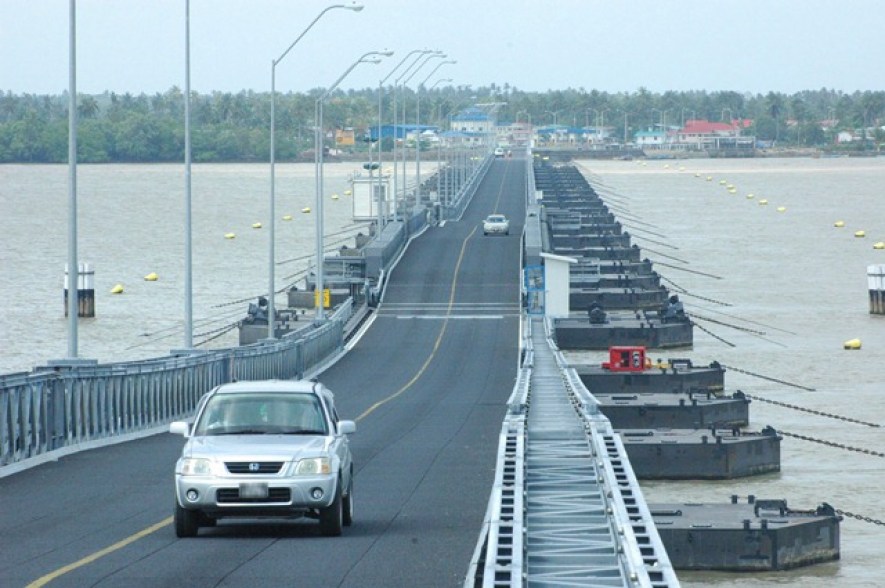The Berbice Bridge was built over ten years ago under the previous Government through a Public Private Partnership financing model. At that time, this was the first project that was financed through such a model which was viewed with good intent in the context of advancing economic development.
Some commentators have speculated that this entire fiasco is a “political gimmick” on the part of the Government which perhaps has some degree of plausibility in the context of the nature of Guyanese politics.
Notwithstanding that, this article seeks to address the financial model of the Berbice Bridge project at the onset. In this regard, an examination of the financial model revealed that the actual financing structure constituted a greater proportion of debt financing relative to equity.
The cost of building the bridge was close to some $10 billion Guyanese dollars which was financed through a combination of debt mobilized from private investors and equity contribution by the Government. The debt-to-equity composition was 84:16 which means 84 percent debt and 16 percent equity.
Financing Structure $’000 %Financing
Equity: Ordinary shares 400,000 4.64
Preference shares 950,000 11.01
1,350,000 15.65
Loans & Bonds 7,275,000 84.35
Total Financing 8,625,000 100
Cited from Dr. AnandGoolsaran’s Accountability Watch Column.
Now, there is no precise financial theory that stipulates an optimum level of debt that a firm should use as part of its financing structure – but, as a ‘rule of thumb’, a firm should not take on more than 70 percent in debt financing within its financing structure, because the higher the leverage ratio [debt financing relative equity] – the greater the risk of default, which in turn, can ultimately lead to bankruptcy.
Why? Because when a company takes on excessive amounts of debtthereby leading to higher debt servicing obligations, means that the firm needs to divert a higher level of its cash flow – generated from revenue to service principal and interest payments on its debt obligations which can then lead to liquidity constraints for the company.
Therefore, the firm’s inability to service its debt obligations would mean that its creditors can then force the firm to go into liquidation to recover their investments and this is what could lead to bankruptcy – this is exactly the case with the Berbice Bridge.
However, nothing is wrong if companies increase their leverage ratios beyond 70 percent because it largely depends on the return on capital employed, the risks factors and the strategic goals and the drivers of the firm’s corporate strategy – that is, how sound and viable these other elements may be.
Public Private Partnerships Models
Public – Private partnerships (PPP) in infrastructure is relatively new experience in most developing countries. Though most governments have considered various steps to promote PPPs in their countries, lack of capacity in the public sector remains to be one of the major problems in implementing PPP projects. To date, only a few countries have developed manuals and resource materials in support of PPP development and for the capacity building of their public officials (UNESCAP, 2011).
In the absence of such established institutional arrangements and resource materials, public officials face difficulties in project development and implementation, and general public can have many misunderstandings about PPPs (UNESCAP, 2011).
Key challenges: Good governance and public acceptability
Vicious cycle of:
- Weak institutions;
- Lack of transparency in deals, conflicts of interest, corruption etc.,
- Popular distrust of the ‘fat cat’ advisors/consultants at the expense of the consumer (tax-payers);
- Governments losing political will to promote PPPs.
What makes PPPs successful?
- A coherent PPP policy;
- Strong enabling institutions;
- Legal framework “fewer, better and simpler”
- Cooperative risk sharing and mutual support;
- Transparency in partner section;
- Putting people first; and
- Achieving sustainable development
Recommendations/Conclusion
In circumstances within which it is necessary to save a bankrupt company, it becomes necessary to restructure its stock of debt (which it cannot service in the first place) by renegotiating the terms and conditions of the debt instruments.
In the case of the Berbice Bridge, the Government can consider converting a substantial portion of the debt instruments through equity conversion – in order words, purchase a large portion of the stock of debt.
This shall ease the financial constraints of the entity as it is also important to consider that the proposed increases are extremely unreasonable especially since with the closure of the some of the sugar estates, many persons are unemployed in that region which has led to an overall reduction in commercial activities. Thus, a massive toll hike such as those proposed will only further exacerbate the economic hardships of the people of Berbice and others.













